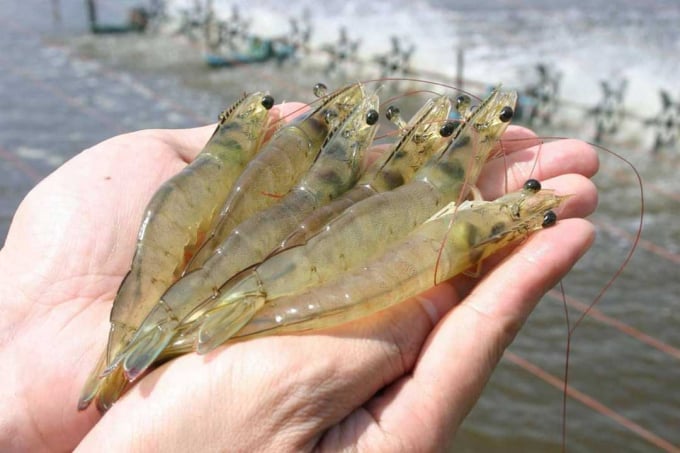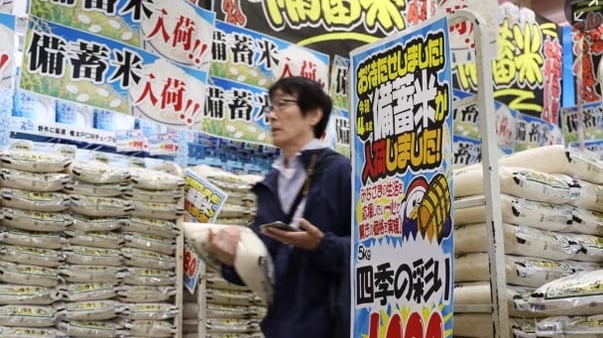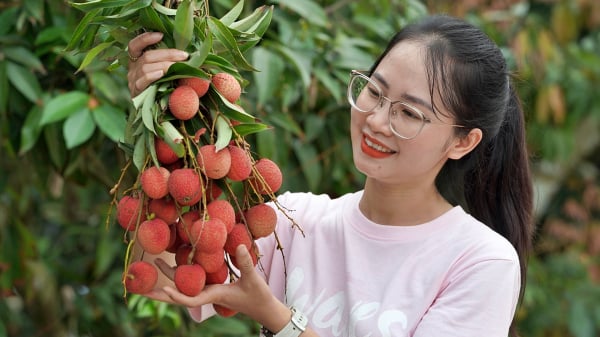June 18, 2025 | 10:12 GMT +7
June 18, 2025 | 10:12 GMT +7
Hotline: 0913.378.918
June 18, 2025 | 10:12 GMT +7
Hotline: 0913.378.918

Vietnamese shrimp ranks third in terms of market share in Russia. Photo: TL.
According to data revealed by the International Trade Center (ITC) Russia's shrimp imports stably increased in four consecutive years from 2016 to 2020. Shrimp import to Russia was valued at US$214.7 million in 2016 and the figure increased to US$320.7 million in 2020.
In the same period, Russia raised shrimp imports from Ecuador, India, Vietnam and Argentina while the country reduced the imports from China, Bangladesh, Indonesia and Thailand.
Vietnam shrimp exports to Russia rose from US$15.7 million in 2017 to US$41.1 million in 2020 (an increase of 162%). The market share of Vietnamese shrimp products in Russia jumped to 12% in 2020 from 11% in 2016.
Also according to ITC, in the first seven months of the year shrimp imports in Russia reached US$276 million, up 82% compared to the same period last year. Frozen warm-water shrimp and frozen cold-water shrimp were the two main products imported into Russia accounting for 75% and 18% of the total shrimp imports to this market respectively.
Russia imports shrimp products from 25 markets of which Vietnam is the third largest exporter of shrimp to the market after India and Ecuador. Additionally some countries such as China, Bangladesh, Indonesia, Argentina and Thailand are promoting shrimp exports to Russia.
Russian shrimp imports from the three export countries have grown strongly. Specifically shrimp imports from Ecuador and India increased by 42% and 88% respectively while the imports from Vietnam jumped by 106%.
Ecuador and India are the two largest suppliers of shrimp to the Russian market accounting for 25% and 15% of the market share in the market in the first seven months of this year. Vietnam ranked third in terms of shrimp exports to Russia accounting for 10% of the Russian market share.
The prices of Indian and Ecuadorian shrimp products in the Russian market were more competitive than the products from Vietnam. However Vietnam saw a triple- digit growth in shrimp exports to Russia in this period. It means that despite coping with the high competitive pressure Vietnamese shrimp have still gained a strong foothold in the Russian market.
According to the Vietnam Association of Seafood Exporters and Producers (VASEP) Vietnam shrimp exports to Russia in the first seven months of this year reached over US$27 million or 87% higher over the same period last year
The exports slumped slightly by 9% in April while the increasing sharply for the rest of this period. In particularly, the triple digit growth was recorded in January, May and June.
Vietnam shrimp exports in August 2021 decreased by 13% compared to August in 2020 because it was impossible to ensure orders to be promptly delivered in the face of Covid-19.
With strong growth in shrimp imports the first seven months of the year, Russia is the ninth largest shrimp import market of Vietnam accounting for 1.3% of Vietnam's total export value.
VASEP said that Vietnam's shrimp exports to Russia tend to grow significantly. Taking advantage of tariff preferences from the Vietnam-EAEU Free Trade Agreement Vietnamese shrimp will revive its position in the Russian market when shrimp processing plants resume the operations after the pandemic.
Translated by Mai Tham
/2025/06/17/2344-1-131758_261.jpg)
(VAN) Amid tariff risks and growing trade barriers in the U.S. market, Australia is emerging as a promising destination to sustain the growth momentum of Vietnam's shrimp exports.
/2025/06/17/2013-1-nongnghiep-112009.jpg)
(VAN) This notable growth trend reflects the global taste for fresh, nutritious fruits and the expanding use of lychees across various sectors.

(VAN) The political and cultural insulation of Japan’s beloved grain is falling apart, and experts warn the country’s relationship with the staple will have to adapt.

(VAN) Noting risks, report examines impacts of avian influenza, changing trade patterns since 2022, fish fraud, and shipping industry’s net-zero goals.

(VAN) Mr. Tran Quang Bao, General Director of the Forestry and Forest Protection Department, met and worked with the International Wood Products Association to promote cooperation in the field of timber trade.

(VAN) China's outbound shipments of rare earths in May jumped 23% on the month to their highest in a year, though Beijing's export curbs on some of the critical minerals halted some overseas sales.

(VAN) To sustain capital flow, administrative reform alone is not enough; what farmers truly need is an ecosystem where both government and businesses grow together in support.